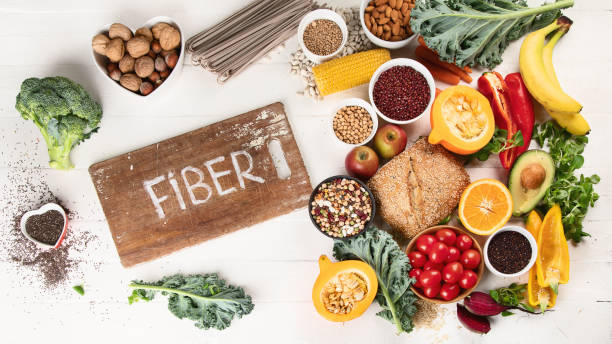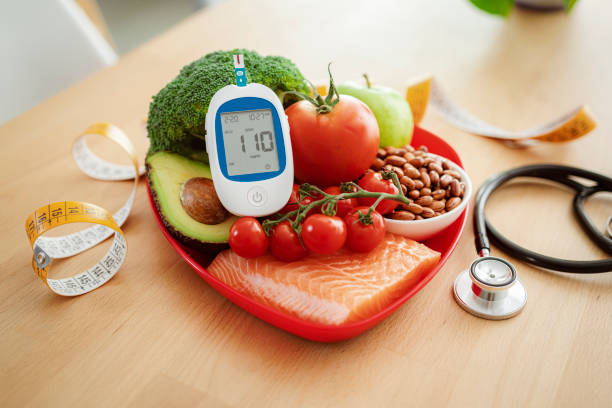Managing blood sugar levels naturally is a powerful way to protect your health, especially if you have diabetes or prediabetes. When it stays too high for too long, it can lead to serious health issues like heart disease, nerve damage, and vision problems. The good news is that you can take control. By making smart changes to your diet, getting regular exercise, and building healthy daily habits, you can lower your blood sugar and boost your energy, focus, and overall well-being.
In this post, we’ll look at 10 proven, science-backed ways to lower your blood sugar levels naturally. These tips are easy to follow, safe for most people, and perfect for anyone who wants to take control of their health. Whether you’re managing diabetes or just trying to prevent it, these strategies can help you feel your best.
1. Eat Fewer Refined Carbs and Sugars
Refined carbs and sugary foods can make your blood sugar rise fast. Common examples include:
- White bread
- Pastries
- Candy
- Soda and other sweetened drinks
These foods break down quickly in your body and cause blood sugar spikes. A better option is to choose complex carbs, which are digested more slowly and help keep blood sugar levels steady. Try adding more of these to your meals:
- Whole grains (like brown rice, quinoa, and oats)
- Legumes (such as beans and lentils)
- Fresh vegetables
- Fruits (especially berries, apples, and pears)
👉 Tip: Always read food labels. Watch out for added sugars, and try to keep them as low as possible.

2. Get Moving: Daily Exercise Helps
Physical activity helps your body use glucose for energy, which can lower your blood sugar in a natural way. Moving your body also boosts your mood and supports a healthy weight.
Try adding these exercises to your routine:
- Walking – Just 30 minutes a day can make a big difference.
- Strength training – Using weights or resistance bands helps build muscle, which uses more glucose.
- Yoga or stretching – These can improve your flexibility and reduce stress, which also supports blood sugar control.
- Everyday movement – Activities like gardening, cleaning, or dancing in your living room all count!
👉 Aim for at least 150 minutes of moderate exercise each week to keep your blood sugar in check.
Read more from the American Diabetes Association on fitness and diabetes.
3. Manage Stress the Healthy Way
Stress causes your body to release hormones that raise blood sugar levels. If stress becomes a daily problem, it can make it harder to manage your blood sugar over time. That’s why finding ways to relax is so important for your health.
Try adding these calming habits to your day:
- Deep breathing – Slow, deep breaths can help calm your nervous system.
- Journaling – Writing down your thoughts can ease your mind.
- Listening to music – Soothing sounds can help you feel more relaxed.
- Spending time in nature – A walk outside can lower stress and lift your mood.
- Practicing mindfulness or meditation – Staying present helps quiet your mind and body.
👉 Just 10 minutes of relaxation a day can help improve your blood sugar and overall well-being.
4. Stay Hydrated to Flush Out Extra Sugar
Staying well-hydrated helps your kidneys flush out extra sugar from your blood through urine. It also keeps you from getting dehydrated, which can lead to higher blood sugar levels.
How much water should you drink each day? Aim for:
- 8–10 cups (64–80 ounces) daily
- More water if you’re active, sweating, or in hot weather
👉 Skip sugary drinks like soda, juice, or sweet tea. Instead, choose water, herbal teas, or sparkling water with lemon or lime for a refreshing and healthy option.

5. Eat More Fiber-Rich Foods
Fiber helps slow down how fast your body digests carbs and sugar. This means your blood sugar levels stay more steady instead of spiking after meals.
Some great high-fiber foods to add to your diet include:
- Leafy greens – like spinach, kale, and collards
- Berries – such as raspberries, blueberries, and strawberries
- Lentils – packed with fiber and plant-based protein
- Chia seeds – tiny but loaded with fiber
- Oats – especially steel-cut or rolled oats
- Sweet potatoes – a tasty and fiber-rich carb
Try to get 25–30 grams of fiber each day for the best results.
👉 Easy tip: Add chia seeds to your yogurt, oatmeal, or smoothies for a quick fiber boost.
6. Choose Low Glycemic Index (GI) Foods
The glycemic index (GI) shows how fast a food can raise your blood sugar. Foods with a low GI are digested more slowly, which helps keep your blood sugar steady after meals.
Here are some healthy low GI foods to enjoy:
- Lentils and beans – full of fiber and protein
- Non-starchy vegetables – like broccoli, peppers, and spinach
- Whole oats – a great choice for breakfast
- Most fruits – especially apples, pears, and berries
- Quinoa – a high-protein grain with a low GI
👉 Tip: Combine carbs with protein or healthy fats (like nuts or avocado) to lower the glycemic effect of your meal.
Check out Harvard’s list of glycemic index foods.
7. Get Better Quality Sleep
Not getting enough sleep can lead to insulin resistance, which makes it harder for your body to control blood sugar levels. Over time, poor sleep can raise your risk of diabetes and other health problems.
To improve your sleep quality, try these tips:
- Stick to a regular bedtime – go to bed and wake up at the same time each day
- Avoid screens before bed – the blue light can keep your brain awake
- Keep your room cool and dark – this helps your body relax
- Limit caffeine – especially in the afternoon and evening
Aim for 7–9 hours of quality sleep each night to support healthy blood sugar levels.
👉 Try a calming bedtime routine like reading a book, light stretching, or taking a warm bath to help you unwind.
8. Watch Your Portion Sizes
Eating large portions, especially of carbs, can cause your blood sugar to spike quickly. Managing portion sizes is an easy way to keep your blood sugar steady and avoid overeating.
Here are some simple tips to control your portions:
- Use a smaller plate – this helps you eat less without feeling deprived
- Avoid going back for seconds – once you’re done, try not to go for more
- Fill half your plate with vegetables – they’re low in calories and packed with nutrients
- Eat slowly and stop when you’re 80% full – listen to your body’s hunger cues
👉 Portion control is important, even when you’re eating healthy foods. It can help you maintain steady blood sugar and feel more satisfied.
9. Add Apple Cider Vinegar Before Meals
Research shows that apple cider vinegar (ACV) may help improve insulin sensitivity and lower blood sugar, especially after meals. It can be a simple and natural way to support healthy blood sugar levels.
Here’s how to use ACV:
- Mix 1 tablespoon of ACV in a glass of water
- Drink it before meals, especially those high in carbs, to help control blood sugar spikes
👉 Always dilute ACV with water to protect your teeth and stomach. Consult your doctor before adding it to your routine, especially if you have digestive concerns or take certain medications.
10. Don’t Skip Meals—Eat Balanced, Regularly
Skipping meals can cause your blood sugar to drop too low, and then spike when you finally eat. This up-and-down pattern can be tough on your body and make blood sugar harder to control.
To keep your blood sugar stable, try these tips:
- Eat 3 balanced meals a day – make sure each meal is nutritious and satisfying
- Include protein, fiber, and healthy fats with every meal to help balance your blood sugar
- Have small, healthy snacks if you go more than 4 hours without eating, to prevent drops in blood sugar
Great snack ideas to keep your blood sugar steady:
- A handful of almonds
- Greek yogurt with fresh berries
- Hummus with crunchy veggie sticks
👉 Regular meals and snacks help keep your metabolism and blood sugar levels steady throughout the day.

Lifestyle Habits That Support Blood Sugar Control
Beyond food and exercise, these everyday habits make a big difference:
✔ Stop Smoking
Nicotine can increase blood sugar and lead to insulin resistance.
✔ Limit Alcohol
Too much alcohol can cause dangerous drops in blood sugar—especially if you’re taking medication.
✔ Check Blood Sugar Regularly
Keep a log and learn how your body reacts to different foods and activities.
Final Thoughts: You Have the Power to Take Control
You don’t need drastic diets or costly supplements to improve your blood sugar levels. Simple, consistent changes to your diet, exercise, and daily habits can make a big difference in lowering your blood sugar naturally and supporting your long-term health.
These 10 strategies are scientifically proven, easy to implement, and truly effective. Whether you’re managing prediabetes, living with diabetes, or just looking to improve your overall health, these steps can help you feel more energized, balanced, and in control of your health journey.
💬 What natural strategies have worked for you?
We’d love to hear your story! Share your tips or questions in the comments below—and let’s support each other on this journey to better health.

